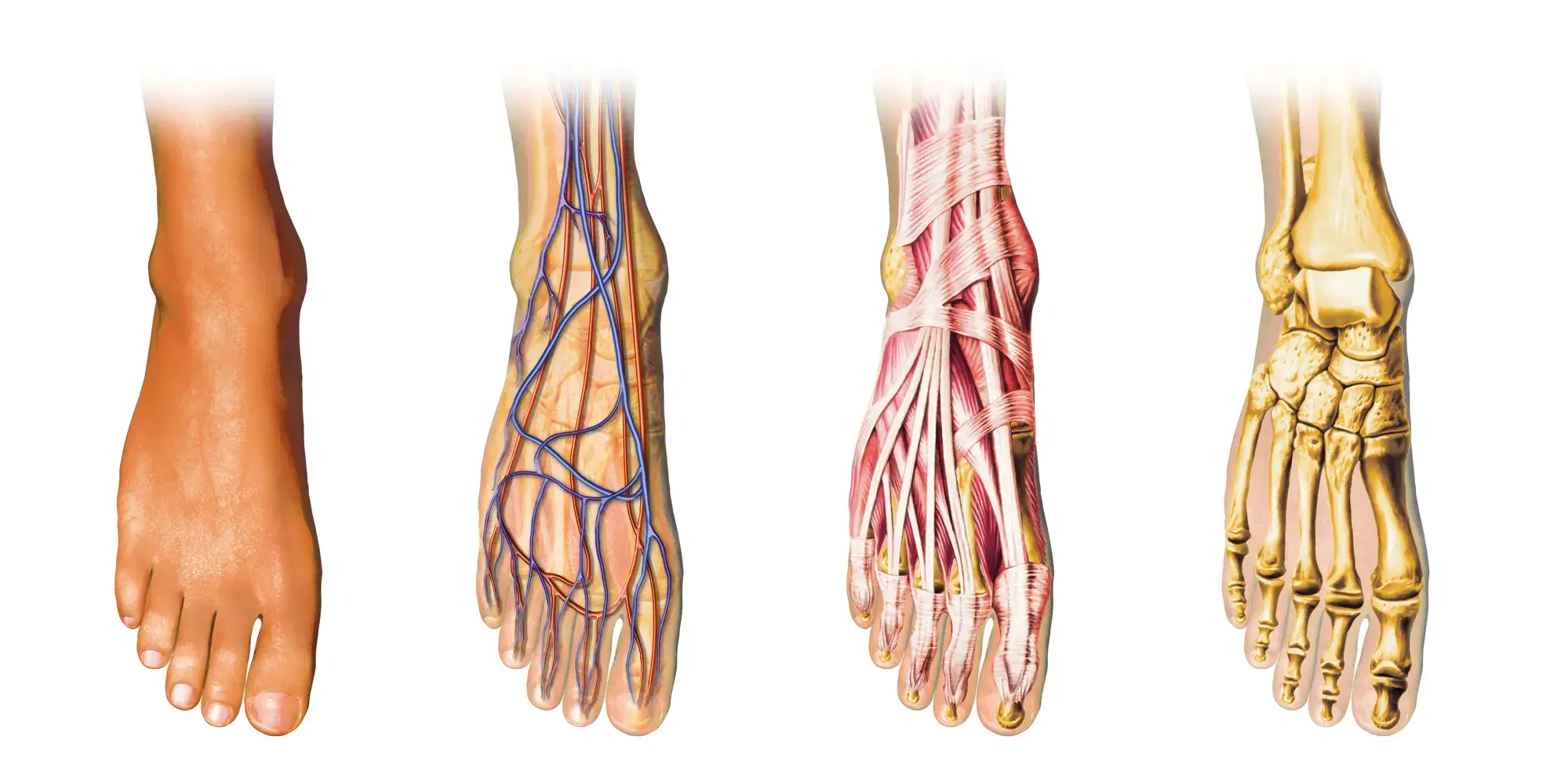Plantar Fasciitis

Does Plantar Fasciitis Cause Swelling?
Read More
BY WILLIAM BOZEMAN
February 29, 2024
Plantar fasciitis is a relatively common problem that affects the feet, particularly the heel area. Approximately one in every ten people will develop plantar fasciitis in their lives. This foot condition can cause discomfort and pain in the affected area, making walking or engaging in other physical activities difficult. While pain is the most common symptom of plantar fasciitis, it can also lead to swelling, which can contribute to the discomfort and overall impact on one’s daily life.
To understand how plantar fasciitis can cause swelling, it is essential to be familiar with the foot’s anatomy. The foot consists of various muscles, tendons, ligaments, and bones that work together to support your body weight and allow you to move. One crucial structure in the foot is the plantar fascia, which is a thick band of tissue. This tissue stretches from the heel bone to the toes and helps maintain the foot’s arch. When it becomes inflamed or irritated, it can lead to plantar fasciitis.

Plantar fasciitis occurs when overuse or strain causes the plantar fascia to become irritated and inflamed. This can happen for various reasons, such as wearing improper footwear, engaging in high-impact activities like running or jumping, obesity, or having tight calf muscles. In most cases, plantar fasciitis will heal on its own with proper rest and treatment. The healing time can vary from a few weeks to several months, depending on the severity of the condition. However, in some cases, it can develop into a chronic condition if left untreated.
When the plantar fascia becomes strained or is injured, it can lead to inflammation and swelling in the affected area. Inflammation is the body’s natural response to any injury. It occurs when blood flow to the affected area is increased. Such inflammation causes fluid buildup, which results in swelling and can make the foot feel tight and stiff.
In the case of plantar fasciitis, this swelling can occur in the heel or along the arch of the foot. This swelling adds pressure on the already irritated tissue, causing more pain and discomfort. Swelling can also restrict blood flow to the affected area, slowing down the healing process.
Besides the visible swelling, other signs of inflammation in plantar fasciitis can include redness and warmth in the affected area. The foot may also feel tender to touch, and the skin on the heel or arch may appear stretched or shiny. In severe cases, the swelling can cause difficulty walking or standing for extended periods.
In addition to swelling, plantar fasciitis can cause other symptoms that may persist even after the swelling has subsided.
Sharp, stabbing pain in the heel or on the underside of the foot is one of the most common symptoms. This type of pain is often worse in the morning or after long periods of rest and can also be felt during physical activity. The pain may subside as the day goes on but can return after prolonged standing or walking.
If left untreated, plantar fasciitis can become chronic. In these cases, the pain may worsen over time and become constant, even during periods of rest. This happens due to repetitive strain on the plantar fascia without proper rest or treatment.
The plantar fascia is not the only ligament that can be affected by plantar fasciitis. It can also lead to pain as well as inflammation in other foot ligaments, such as the Achilles or peroneal tendons. This happens because the plantar fascia is connected to these ligaments, and any strain or inflammation in the plantar fascia can also affect them.
Plantar fasciitis usually makes walking or standing for prolonged periods a challenge, especially if the swelling and pain are severe. Every step you take puts pressure on the foot, particularly the heel and arch area. In cases of severe pain or swelling, this pressure can become unbearable and make it difficult to perform even simple daily activities.
Since plantar fasciitis can become a chronic condition if left untreated, it can lead to long-term foot pain that may persist even after the swelling and other symptoms have subsided. This makes it crucial to seek treatment early on to prevent the long-term consequences of this condition.
Swelling in plantar fasciitis can occur due to various reasons, including:
Whether or not medical treatment is required, there are a few things you can do at home to relieve swelling and discomfort from plantar fasciitis:
If the swelling and other symptoms in your foot persist despite at-home remedies, it is essential to seek medical attention. A doctor may recommend one or more of the following treatment options based on how severe your condition is:
It’s important to be aware that many conventional treatments come with a certain amount of risk. For example, pain medications often cause side effects, while surgery is incredibly invasive and can cause various complications, such as infection or nerve damage.
At Relatyv, we avoid the use of treatments that are invasive or come with potential side effects. Instead, we take a more whole-person approach to managing pain and swelling induced by plantar fasciitis. Our protocol implements a Neurofunctional Pain Management approach to address the neurological, muscular, and sensory components of the pain experience instead of simply masking the symptoms. Our drug-free, non-invasive, non-surgical, and non-chiropractic treatment modalities include:
Plantar fasciitis can be quite debilitating, causing significant discomfort and affecting daily activities. However, with the proper approach to pain management, it is possible to alleviate swelling and pain induced by this condition.
At Relatyv, we offer a personalized treatment plan that addresses the root cause of plantar fasciitis and provides relief without the use of invasive or potentially harmful treatments. Our goal is for our patients to feel like they are walking on clouds, free from the burden of pain and swelling caused by plantar fasciitis.
About the Author
Will is a healthcare executive, innovator, entrepreneur, inventor, and writer with a wide range of experience in the medical field. Will has multiple degrees in a wide range of subjects that give depth to his capability as an entrepreneur and capacity to operate as an innovative healthcare executive.
Share on Social Media




